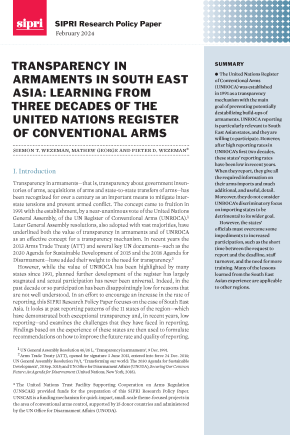Transparency in Armaments in South East Asia: Learning from Three Decades of the United Nations Register of Conventional Arms

The United Nations Register of Conventional Arms (UNROCA) was established in 1991 as a transparency mechanism with the main goal of preventing potentially destabilizing build-ups of armaments. UNROCA reporting is particularly relevant to South East Asian states, and they are willing to participate. However, after high reporting rates in UNROCA’s first two decades, these states’ reporting rates have been low in recent years. When they report, they give all the required information on their arms imports and much additional, and useful, detail. Moreover, they do not consider UNROCA’s discriminatory focus on importing states to be detrimental to its wider goal.
However, the states’ officials must overcome some impediments to increased participation, such as the short time between the request to report and the deadline, staff turnover, and the need for more training. Many of the lessons learned from the South East Asian experience are applicable to other regions.
I. Introduction
II. The establishment and working of UNROCA
III. Reporting to UNROCA by South East Asian states, 1992–2022
IV. The benefits of reporting to UNROCA for South East Asian states
V. Conclusions


